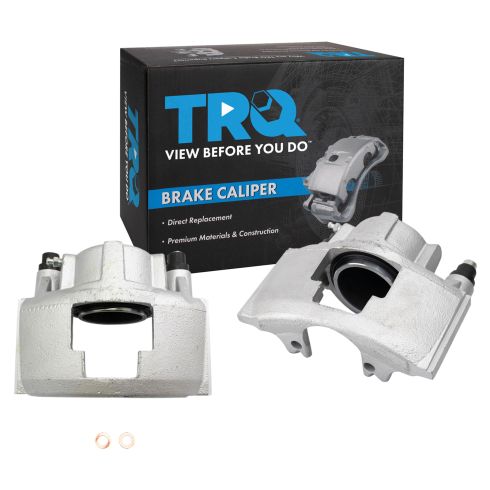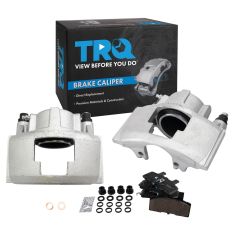1ABCS00120-Chevrolet Dodge GMC Cadillac Front Driver & Passenger Side 2 Piece Brake Caliper Set TRQ CLA35382
Replaces
2002 GMC Savana 1500 Van Front Driver & Passenger Side 2 Piece Brake Caliper Set TRQ CLA35382
Product Reviews
Loading reviews
4.75/ 5.0
4
4 reviews
Works great!
[{"url": "https://wac.edgecastcdn.net/001A39/prod/media/pNISJll75W64CYGsite/7f8473ada1b486f37bd34b3c5da81394_1643839315258_0.jpeg", "caption": "Perfect fit and the truck stop everytime I step on the brake pedal."}]
February 2, 2022
Good price nd quick delivery.
Calipers Are NEW! No Core Return Required!
June 15, 2022
Love TRQ Products! Use TRQ 4 Calipers, Drilled & Slotted Rotors, Complete Suspension Kit, Bearing Hubs. Great Price, FREEEE Shipping on EVERY Purchase! Arrived From The Eastern US To West (So Cal.) In Less Than a Week!
1995 Chevrolet K2500 Suburban 7.4L Engine 4WD GVW 7200 , & 7900 GVRW Fully Loaded! Eg. 8 Passengers (3rd Row Seating) , 40 Gallons Gas, Luggage.
Nice
June 25, 2022
Great fit
September 19, 2022
Easy replacement!
Customer Q&A
Does this fit 4wd?
January 11, 2023
10
Yes this will fit 4WD models.
January 12, 2023
T I
Are these rust proof?
May 6, 2023
10
These parts are not rust proof.
May 8, 2023
Kemal S
10
Nothing is rust proof. And its part of your cars maintenance
May 19, 2023
Abdiel C
Are the low drag?
June 15, 2024
10
These calipers are not low drag.
June 17, 2024
Nick R
GMC is a registered trademark of General Motors Company. 1A Auto is not affiliated with or sponsored by GMC or General Motors Company.
See all trademarks.














